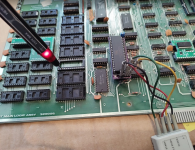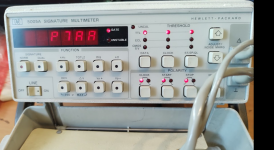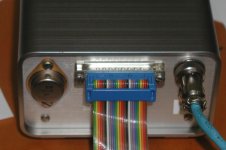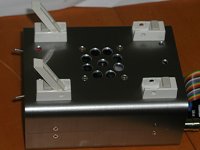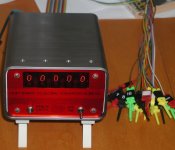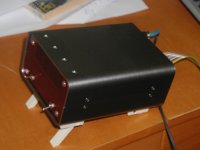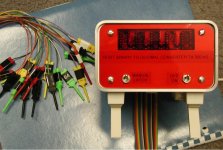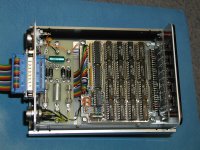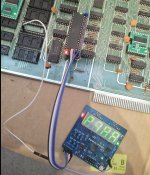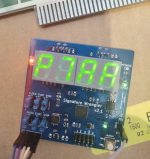Nivag Swerdna
Veteran Member
I recently discovered the joy of HP Digital Signatures, i.e. to monitor a digital signal during a period of time and to generate a 'checksum' of the data in between as a way of characterising the signal you just observed. For microcomputer systems a good test set-up is to install a NOP adapter, use A15 as the start and stop signal (i.e. define the measurement period to be one cycle of A15) and then measure another pin.
Now HP Signature Analyzers may have been the rage some decades ago but are now pretty rare so I set about devising a couple of methods of generating signatures.

The first was used here... I have a small microprocessor on a board that fits in the CPU socket and can twiddle all the pins. There is a flying lead which can wander around other pins under test and the result is sent back to the PC.
HP's signatures are quite clever! e.g. the signature of address line A6 is U759. As you wander around the board if you find another pin that has signature U759 then you can be pretty confident you have A6!
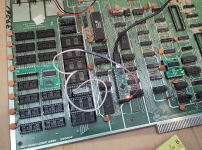
Has anyone tried this technique on their PET?
With a NOP adapter it is possible to verify all the address decoding logic (for Reads anyway) very rapidly.
Would you like to compare your results to what I have in the attachment?
Thanks for your interest!
PS
sigrok does support HP Signatures so if you have a cheapo logic analyser then you can probably produce signatures too (although it is a bit fiddly since you need to capture and then analyse rather than getting realtime results)
Now HP Signature Analyzers may have been the rage some decades ago but are now pretty rare so I set about devising a couple of methods of generating signatures.

The first was used here... I have a small microprocessor on a board that fits in the CPU socket and can twiddle all the pins. There is a flying lead which can wander around other pins under test and the result is sent back to the PC.
HP's signatures are quite clever! e.g. the signature of address line A6 is U759. As you wander around the board if you find another pin that has signature U759 then you can be pretty confident you have A6!

Has anyone tried this technique on their PET?
With a NOP adapter it is possible to verify all the address decoding logic (for Reads anyway) very rapidly.
Would you like to compare your results to what I have in the attachment?
Thanks for your interest!
PS
sigrok does support HP Signatures so if you have a cheapo logic analyser then you can probably produce signatures too (although it is a bit fiddly since you need to capture and then analyse rather than getting realtime results)
Attachments
Last edited:

